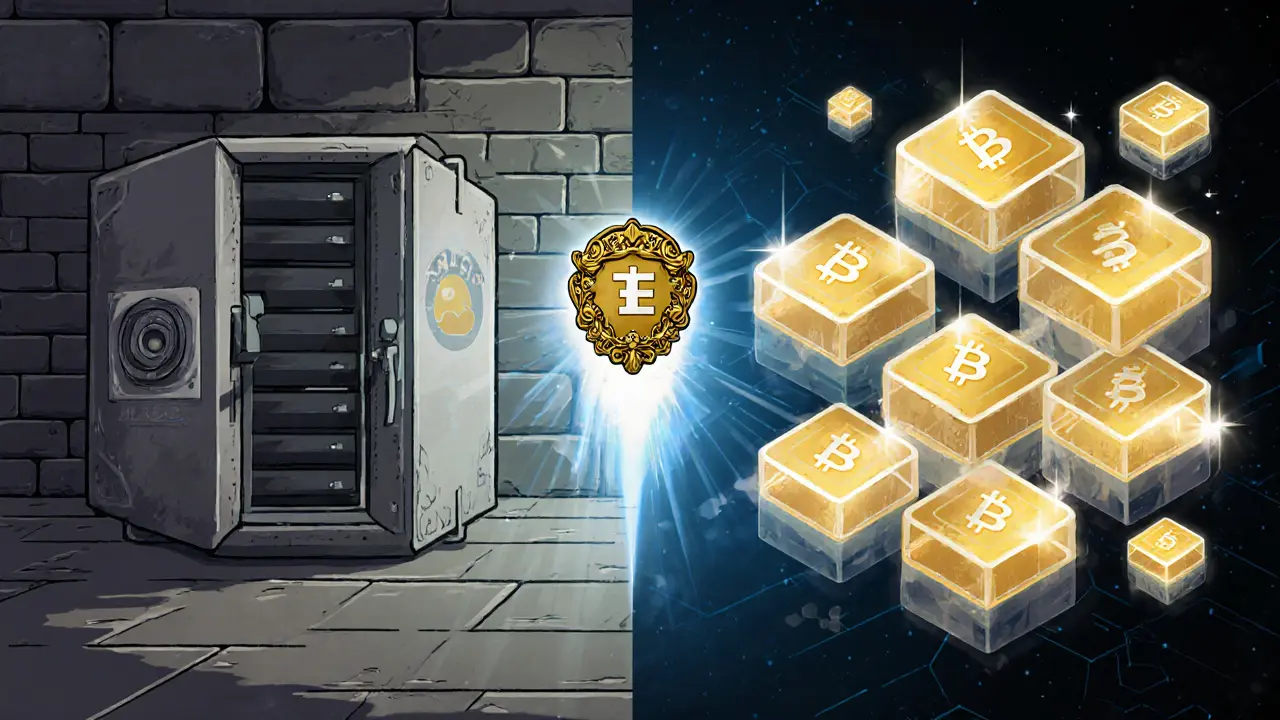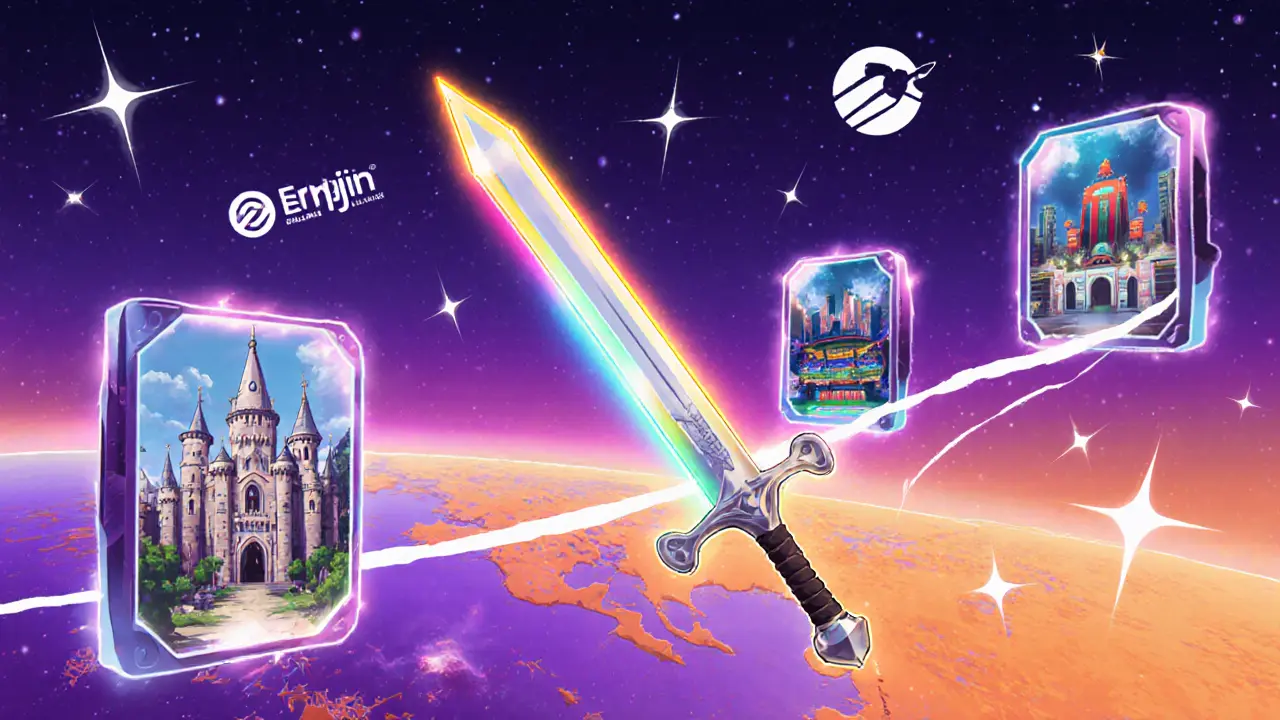How NFTs Are Changing Game Asset Ownership
 Oct, 17 2025
Oct, 17 2025
NFT Trading Fee Calculator
Estimate Your NFT Transaction Costs
Calculate gas fees for buying, selling, or transferring gaming NFTs across popular blockchains.
Select Blockchain Network
Current Network Status
Recommended Actions
Imagine buying a sword in a game, then being able to sell it on any platform, keep it if the server shuts down, or even use it in a completely different title. That promise lives at the heart of gaming NFTs, and it’s reshaping how players think about virtual items. But the shift isn’t just hype; it’s built on blockchain tech, legal tweaks, and new business models that affect every stakeholder.
What Makes a Gaming NFT Different?
Gaming NFTs are non-fungible tokens that act as a verifiable certificate of ownership for a specific in‑game asset. Unlike regular tokens, each NFT carries unique metadata that points to a digital file-often stored on IPFS-while the blockchain records who owns that certificate forever.
This separation between the token (ownership proof) and the asset (the visual or functional item) is the core technical distinction. The token resides on public ledgers such as Ethereum or Solana, giving anyone with a wallet the ability to transfer, trade, or even burn the token.
Why Traditional Game Assets Can’t Compete
Classic games keep items inside a “walled garden.” When you buy a skin on Steam, the publisher’s server records that purchase. The data never leaves that ecosystem, and the publisher can revoke, update, or delete the item at any time. This model offers no real scarcity beyond the company’s internal database.
In contrast, a gaming NFT lives on an open blockchain where scarcity is enforced by the network itself. No single company can alter the token’s history without consensus, which creates a level of trust that traditional models lack.
| Aspect | Traditional Assets | NFT Assets |
|---|---|---|
| Ownership Record | Publisher‑controlled database | Public blockchain ledger |
| Transferability | Limited to platform marketplace | Cross‑platform secondary markets |
| Scarcity Enforcement | Server‑side limits | Cryptographic uniqueness |
| Player Control | Subject to game updates, bans | Immutable token ownership |
The Legal Landscape: What Does “Ownership” Really Mean?
In the U.S., the 2022 amendment to the Uniform Commercial Code (UCC) introduced Article 12, classifying NFTs as “controllable electronic records”-a form of personal property. That change gives courts clearer footing to treat NFTs as transferable assets. However, the amendment mainly addresses financial instruments, not the intellectual property attached to a game’s artwork.
Legal scholars at Strebeck Law stress that most game‑NFT contracts grant only a non‑exclusive license to use the linked asset. The developer decides what rights the buyer receives-whether the token can be displayed, sold, or used in other games. In practice, players often receive a limited set of privileges rather than full copyright ownership.
That distinction explains why many game studios market “true ownership” while still retaining the right to modify or remove the underlying asset. The token you hold can be transferred, but the visual representation may become unusable if the developer pulls the content.

Technical Trade‑offs: Blockchains, Gas Fees, and Performance
Ethereum was the first major platform for gaming NFTs, but its average transaction time of 20‑30 seconds and volatile gas fees (sometimes exceeding $50) can frustrate players during high‑traffic events. Solana, by contrast, processes 400‑1,000 transactions per second, offering a smoother experience for fast‑paced games.
Developers must also decide where to store the actual asset files. Decentralized storage networks like IPFS ensure the file remains accessible even if a single node goes down, but retrieval speeds can vary. Some projects still rely on traditional cloud services, which re‑introduces central points of failure.
Economic Implications for Players and Studios
The ability to trade NFTs on open marketplaces such as OpenSea creates new revenue streams for players. Early adopters of Axie Infinity earned up to $1,000 per month during the 2021 “play‑to‑earn” boom, a lifeline for many gamers in Southeast Asia.
However, uncontrolled secondary markets can destabilize game economies. When players flood a game with cheap NFTs, in‑game balance suffers, prompting developers to intervene with burn mechanisms or royalty fees. The result is a constantly shifting balance between player freedom and developer control.
Market data from DappRadar shows that total monthly trading volume for gaming NFTs fell 62 % from 2022 to 2023, dropping from $1.24 billion to $467 million. The correction reflects both over‑hype and growing consumer skepticism.
Adoption Hotspots and Regulatory Trends
While Western markets see modest NFT gaming penetration (around 4 % of gamers), Southeast Asia boasts a 17 % participation rate, driven by “play‑to‑earn” models that supplement incomes. The World Bank’s 2023 study highlights this regional divide.
Regulators are catching up. The SEC’s 2024 lawsuit against Impact Theory for allegedly offering unregistered securities through an NFT collection signals tighter scrutiny in the U.S. Meanwhile, the EU’s MiCA framework, effective June 2024, provides clearer rules for classifying digital assets, giving developers a more predictable legal environment.

Real‑World Examples: Successes and Failures
Success story: Epic Games announced a partnership with the ApeChain ecosystem in January 2024, allowing limited‑rights NFTs to be used across multiple titles, with clear licensing terms baked into the smart contracts.
Failure case: The Quartz platform by Ubisoft was shuttered in September 2022 after 87 % of Steam reviewers expressed negative sentiment. Players who bought the NFTs saw no utility once the service ended, illustrating the risk of “asset‑locked” projects.
Community feedback platforms such as Reddit’s r/NFT and Trustpilot show mixed experiences-positive earnings for early entrants versus complaints about lost funds, high gas fees, and unfulfilled promises.
Practical Steps for Players Interested in Gaming NFTs
- Set up a compatible wallet (e.g., MetaMask for Ethereum, Phantom for Solana).
- Research the specific rights attached to the NFT. Look for the smart‑contract’s license clause or the developer’s whitepaper.
- Calculate gas fees before purchasing. Use tools like Gas Now to time low‑fee periods.
- Store asset files securely. If the NFT points to an IPFS hash, consider pinning services to keep the file accessible.
- Engage with community channels (Discord, Reddit) for up‑to‑date information on game updates or marketplace issues.
Following these steps reduces the learning curve-CryptoSlate reports that 68 % of new users spend 3‑5 hours learning before their first purchase, highlighting the importance of preparation.
Future Outlook: Interoperability and Standards
The biggest hurdle for widespread adoption is interoperability. Current NFTs are often locked to a single game’s ecosystem. Projects like Enjin and its Efinity blockchain aim to create cross‑game standards, letting a sword earned in one title be equipped in another without extra coding.
Industry groups such as the Blockchain Game Alliance are drafting “NFT Ownership Standards” that would define a clear “basket of rights” for each token, making legal expectations transparent for buyers.
As standards mature and regulatory clarity improves, we can expect a shift from vague “ownership” marketing to concrete, utility‑driven NFTs that genuinely benefit both players and developers.
Do I really own the artwork when I buy a gaming NFT?
Usually, you own the token that proves you have a license to use the artwork. Copyright and the right to reproduce the image remain with the game studio unless explicitly transferred.
Can I sell my gaming NFT on any marketplace?
Most NFTs can be listed on open marketplaces like OpenSea, but some developers restrict resale to their own platforms. Always read the token’s smart‑contract terms.
What’s the biggest technical downside of using NFTs in games?
High gas fees and transaction latency on congested blockchains can make quick in‑game trades frustrating. Choosing a fast chain like Solana or a layer‑2 solution helps mitigate this.
Are gaming NFTs regulated?
Regulation varies by country. In the U.S., the SEC is reviewing NFTs for securities compliance, while the EU’s MiCA rules provide clearer classification for digital assets.
How can I protect my NFT assets if a game shuts down?
If the token’s metadata points to an IPFS hash, the file can remain accessible even after the game’s servers close. However, without developer support, the asset may lose in‑game functionality.
Daisy Family
October 23, 2025 AT 15:51Paul Kotze
October 24, 2025 AT 14:38Jason Roland
October 25, 2025 AT 13:12Niki Burandt
October 26, 2025 AT 05:14Chris Pratt
October 26, 2025 AT 07:27Karen Donahue
October 26, 2025 AT 19:45Bert Martin
October 27, 2025 AT 17:17Ray Dalton
October 27, 2025 AT 22:18Peter Brask
October 28, 2025 AT 02:41Trent Mercer
October 28, 2025 AT 17:23Kyle Waitkunas
October 29, 2025 AT 17:00vonley smith
October 30, 2025 AT 12:50Melodye Drake
October 31, 2025 AT 11:12paul boland
November 1, 2025 AT 09:31harrison houghton
November 1, 2025 AT 23:13DINESH YADAV
November 2, 2025 AT 19:01rachel terry
November 3, 2025 AT 16:25Susan Bari
November 4, 2025 AT 05:48Bert Martin
November 5, 2025 AT 03:05